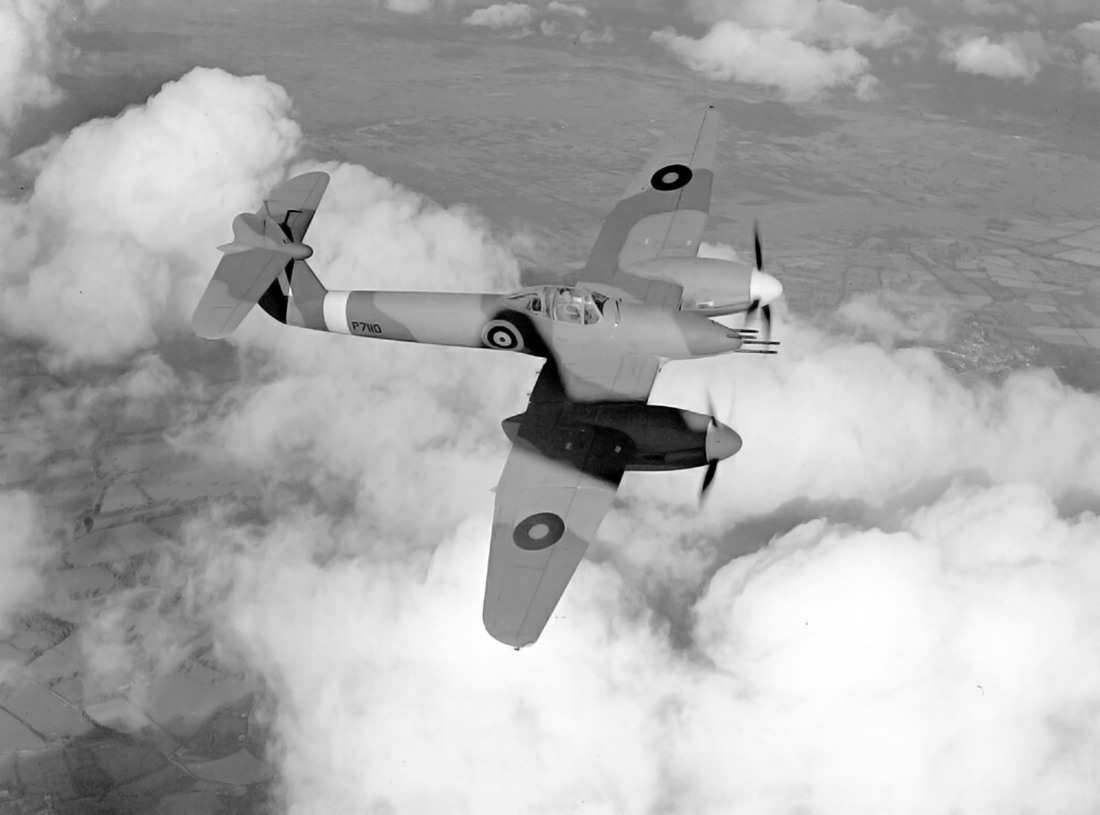Issues Encountered in the Westland Whirlwind Early Service
The Westland Whirlwind, while a highly advanced aircraft for its time, faced several challenges during its early service with the RAF.
Engine Problems: The most persistent issue plaguing the Whirlwind was related to its engines. The Rolls-Royce Peregrine engines, while powerful, were prone to problems, particularly at high altitudes. These issues included overheating and a tendency to cut out, especially during dives. The Whirlwind’s high speed and performance put a lot of strain on the engines, further exacerbating these problems.
Structural Issues: The high aspect ratio wing, designed for optimal performance at low altitudes, contributed to handling issues at higher altitudes, including a tendency to “snake” or become unstable during certain maneuvers. The tailplane design also underwent several revisions early in the aircraft’s service life to address these issues.
Armament Challenges: While the Whirlwind’s four 20mm Hispano cannons were potent, the cannon installation itself was not without problems. The sources mention “teething troubles” related to the cannons, including issues with the feed mechanism. One incident even involved a cannon firing a burst while the aircraft was on the ground, highlighting the potential dangers of these malfunctions.
Limited Operational Range: The Whirlwind’s relatively short range limited its operational usefulness. This limited range meant that it could not effectively escort bombers on longer missions, nor could it effectively engage in offensive operations deep into enemy territory.
Maintenance and Servicing: The Whirlwind, with its complex design and powerful engines, likely required a higher level of maintenance than other aircraft in service at the time. The concentration on producing a limited number of aircraft, rather than a larger-scale production run, may have also created challenges in terms of supplying spare parts and training qualified maintenance personnel.
Transition to a New Aircraft Type: As with any new aircraft entering service, there were likely challenges associated with training pilots to fly and fight the Whirlwind effectively. Its twin-engine configuration and unique handling characteristics would have required specialized training for pilots accustomed to flying single-engine fighters like the Hurricane or Spitfire.
These challenges, particularly the ongoing engine problems, ultimately limited the Whirlwind’s operational effectiveness and contributed to its relatively short service life. Despite its initial promise as a high-performance fighter, the Whirlwind’s technical issues and the changing nature of air warfare during World War II meant that it would be ultimately overshadowed by other, more versatile aircraft.
